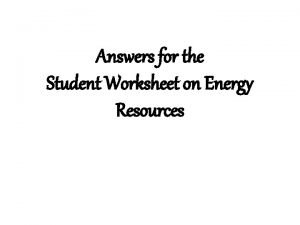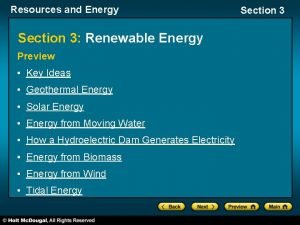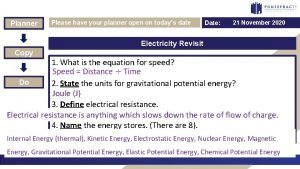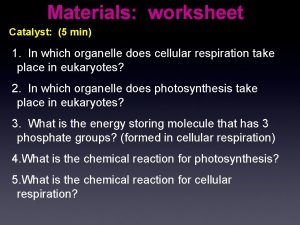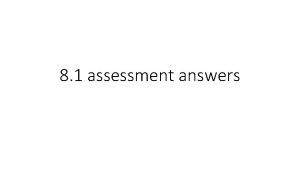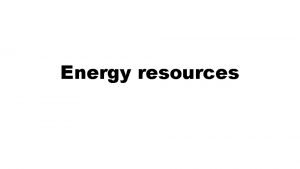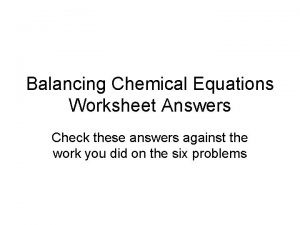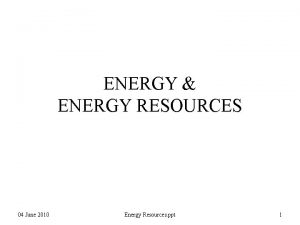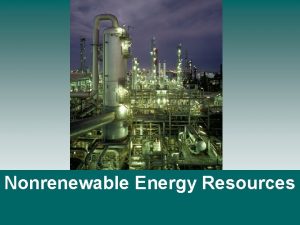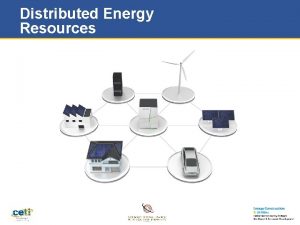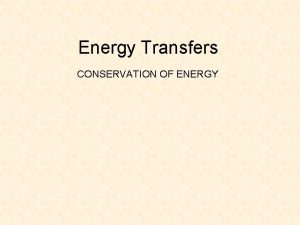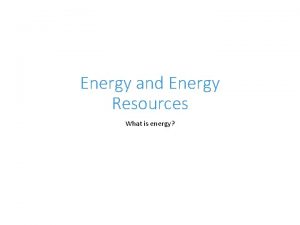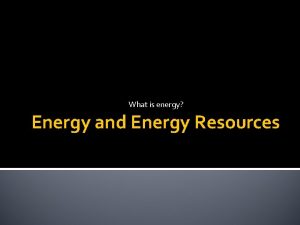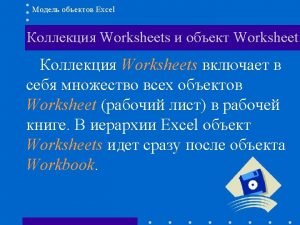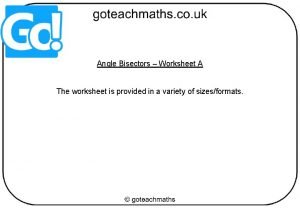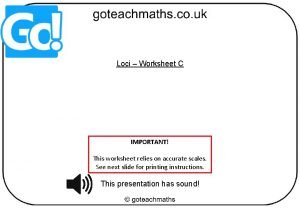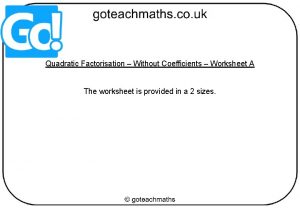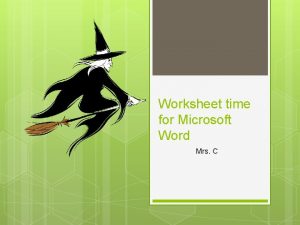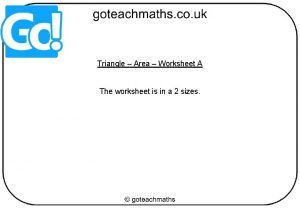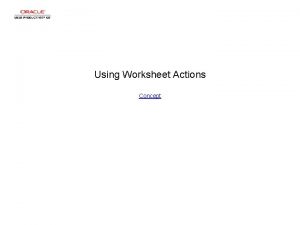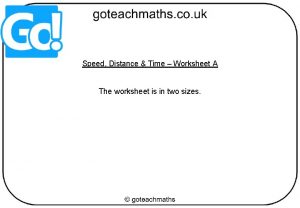Answers for the Student Worksheet on Energy Resources


























- Slides: 26

Answers for the Student Worksheet on Energy Resources

1 a) What does it mean when an energy resource is said to be “renewable”?

1 a) What does it mean when an energy resource is said to be “renewable”? • Renewable resources regenerate or can be replaced in a relatively short time period (such as the length of a human life).

1 b) What does it mean when an energy resource is said to be “non-renewable. ”

1 b) What does it mean when an energy resource is said to be “non-renewable. ” • Non-renewable energy resources are in limited supply, in danger of depletion, and take a very long time to make. (No one knows exactly how long, but longer than any human life, and maybe even billions of years).

2 a) Give three or more examples of renewable energy resources.

2 a) Give three or more examples of renewable energy resources. solar energy geothermal or natural steam energy wind energy hydro or water energy from rivers, tides, or ocean waves • biomass, including wood, plant fibers, dried animal dung (waste) • •

b) Give three or more examples of non-renewable energy resources.

b) Give three or more examples of non-renewable energy resources. • • Coal or peat natural gas petroleum or liquid gas nuclear fission (uranium)

3) What are “fossil fuels”? Which nonrenewable energy resources are “fossil fuels”?

3) What are “fossil fuels”? Which nonrenewable energy resources are “fossil fuels”? • Fossil fuels are nonrenewable energy resources; they include coal, natural gas, and petroleum. They are called fossil fuels because they were formed over millions and millions of years by the action of heat from the Earth's core and pressure from rock and soil on the remains (or "fossils") of dead plants and animals. All of the nonrenewable energy resources except nuclear fission use fossil fuels.

• 4. According to the chart above, what percentage of US energy is produced by all of the nonrenewable sources, combined? Show your calculations.

4. According to the chart above, what percentage of US energy is produced by all of the nonrenewable sources, combined? Show your calculations. • Coal + nuclear power + natural gas + petroleum = • 52% + 16% + 20% + 3% = 91%

5. a) What energy resource is most commonly used to make electricity?

5. a) What energy resource is most commonly used to make electricity? • Coal

5 b) Is this energy resource renewable or non-renewable?

5 b) Is this energy resource renewable or non-renewable? • non-renewable

6. What are three main types of air pollutants produced by electrical power plants in the United States (in descending order, from greatest quantity to least)?

6. What are three main types of air pollutants produced by electrical power plants in the United States (in descending order, from greatest quantity to least)? • 1 carbon dioxide • 2 sulfur dioxide • 3 nitrogen oxides

8. What are three benefits or advantages of hydropower?

8. What are three benefits or advantages of hydropower? any three of the following … • clean energy source which does not emit air pollutants • renewable energy source, with virtually unlimited supply • relatively inexpensive to produce power; • recreational reservoirs; • high capacity for handling peak loads

8. What are two limitations or disadvantages of hydropower?

8. What are two limitations or disadvantages of hydropower? any 2 of the following … • environmental impacts; such as dam interrupting salmon spawning • flatlands do not have enough elevation change for hydropower to work (as in most parts of Florida) • potential conflicts of use with farmers who need water to irrigate

10 a. Draw a diagram of a hydroelectric dam and powerhouse, using the back of this page, and label the following: reservoir, intake, penstock, turbine, generator, powerhouse, electrical lines.

. 10 Which part of a generator corresponds to a water wheel?

. 10 Which part of a generator corresponds to a water wheel? • Turbine
 Energy resources worksheet
Energy resources worksheet Chapter 13 mineral resources and mining
Chapter 13 mineral resources and mining The origin of oil student worksheet answers
The origin of oil student worksheet answers Section 3 renewable energy sources worksheet answers
Section 3 renewable energy sources worksheet answers Mxgxh formula
Mxgxh formula Food webs and energy pyramids answer key
Food webs and energy pyramids answer key Section 2 describing energy
Section 2 describing energy Chapter 4 section 1 the nature of energy worksheet answers
Chapter 4 section 1 the nature of energy worksheet answers How living things obtain energy worksheet answers
How living things obtain energy worksheet answers Explain how adp and atp are each like a battery
Explain how adp and atp are each like a battery Transformation process
Transformation process Variable resources definition
Variable resources definition Renewable vs nonrenewable resources worksheet
Renewable vs nonrenewable resources worksheet Energy energy transfer and general energy analysis
Energy energy transfer and general energy analysis Energy energy transfer and general energy analysis
Energy energy transfer and general energy analysis Fspos
Fspos Novell typiska drag
Novell typiska drag Nationell inriktning för artificiell intelligens
Nationell inriktning för artificiell intelligens Returpilarna
Returpilarna Varför kallas perioden 1918-1939 för mellankrigstiden
Varför kallas perioden 1918-1939 för mellankrigstiden En lathund för arbete med kontinuitetshantering
En lathund för arbete med kontinuitetshantering Kassaregister ideell förening
Kassaregister ideell förening Personlig tidbok fylla i
Personlig tidbok fylla i Sura för anatom
Sura för anatom Densitet vatten
Densitet vatten Datorkunskap för nybörjare
Datorkunskap för nybörjare Tack för att ni lyssnade bild
Tack för att ni lyssnade bild
